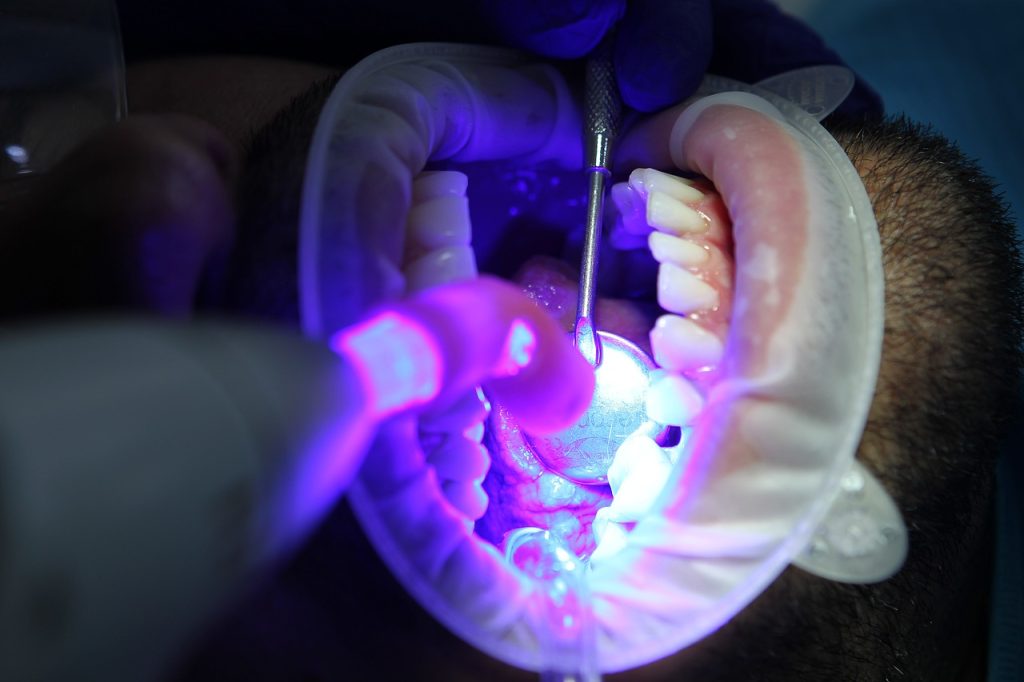A dazzling, white smile is often associated with health, vitality, and confidence. It’s no wonder that teeth whitening has become a popular cosmetic dental procedure. However, many people are not familiar with the science behind teeth whitening and the various methods available. In this blog, we’ll explore the science of sparkling teeth and help you understand the different teeth whitening methods, so you can make an informed decision on how to achieve a brighter smile.
The Anatomy of Tooth Discoloration
To understand teeth whitening, it’s essential to grasp why teeth become discolored in the first place. There are two main types of tooth discoloration: extrinsic and intrinsic.
- Extrinsic Stains: These are surface stains that result from consuming foods and drinks like coffee, tea, red wine, and certain fruits, as well as habits like smoking. Extrinsic stains affect the outermost layer of the tooth, called enamel.
- Intrinsic Stains: These stains originate within the tooth’s inner structure, known as dentin. Intrinsic discoloration can be caused by factors such as genetics, aging, trauma, or exposure to excessive fluoride during tooth development.
How Teeth Whitening Works
Teeth whitening is a process that uses bleaching agents to break down stains and remove discoloration. The science behind teeth whitening primarily revolves around the bleaching agents’ interaction with the stained molecules in your teeth.
Here’s a simplified overview of how the process works:
- Breaking Down Stains: Teeth whitening products contain active ingredients like hydrogen peroxide or carbamide peroxide. When applied to the teeth, these substances break down the chemical compounds responsible for tooth discoloration.
- Oxygen Release: The active ingredients release oxygen molecules, which penetrate the enamel and dentin. These oxygen molecules react with the stain molecules, causing them to break apart.
- Lightening the Teeth: As the stain molecules disintegrate, the overall color of the teeth becomes lighter. This process can make your teeth appear several shades whiter, depending on the concentration and duration of the treatment.
Now, let’s delve into the various teeth whitening methods and their scientific foundations.
-
In-Office Teeth Whitening
In-office teeth whitening is a professional and highly effective option for those seeking immediate results. It involves the application of a high-concentration bleaching agent directly to the teeth. The process typically includes protective measures to shield the gums and soft tissues from any potential irritation.
The science behind in-office teeth whitening lies in the potency of the bleaching agent and the use of specialized light or laser systems to activate it. The light or laser accelerates the breakdown of stain molecules, resulting in a quicker and more dramatic whitening effect. Patients often see a noticeable improvement in the color of their teeth after just one session.
-
At-Home Teeth Whitening Kits
At-home teeth whitening kits, available over the counter or through your dentist, offer a more gradual but still effective approach to teeth whitening. These kits typically contain a lower concentration of bleaching agents, making them safer for unsupervised use. The science behind at-home kits relies on the consistent application of the bleaching agent over a longer period.
Many at-home kits include custom-fitted trays that help ensure even distribution of the bleaching agent. By wearing these trays for a specified amount of time each day, users can gradually lighten their teeth by breaking down stain molecules.
-
Whitening Toothpaste and Rinses
Whitening toothpaste and mouth rinses work by using mild abrasives and chemical agents to remove surface stains. While these products are not as effective as professional treatments, they can help maintain and slightly improve the color of your teeth over time. The science behind these products is based on the gentle removal of extrinsic stains through regular use.
-
Natural Teeth Whitening Methods
There are various natural methods for teeth whitening that rely on home remedies. For example, baking soda, activated charcoal, and oil pulling have been suggested as ways to remove stains and lighten teeth. While these methods can show some improvement in tooth color, they may not be as effective or scientifically proven as other professional methods.
Understanding the science behind teeth whitening methods is the first step toward achieving a brighter smile. Whether you opt for in-office whitening, at-home kits, or natural remedies, the goal remains the same: to break down stain molecules and restore the natural whiteness of your teeth. With the guidance of your dentist and the right teeth whitening method, you can enjoy a more confident and radiant smile that reflects your inner vitality and well-being.
Ready to brighten your smile? Explore the teeth whitening services at Westmead Smile Centre and reveal your inner sparkle today!

